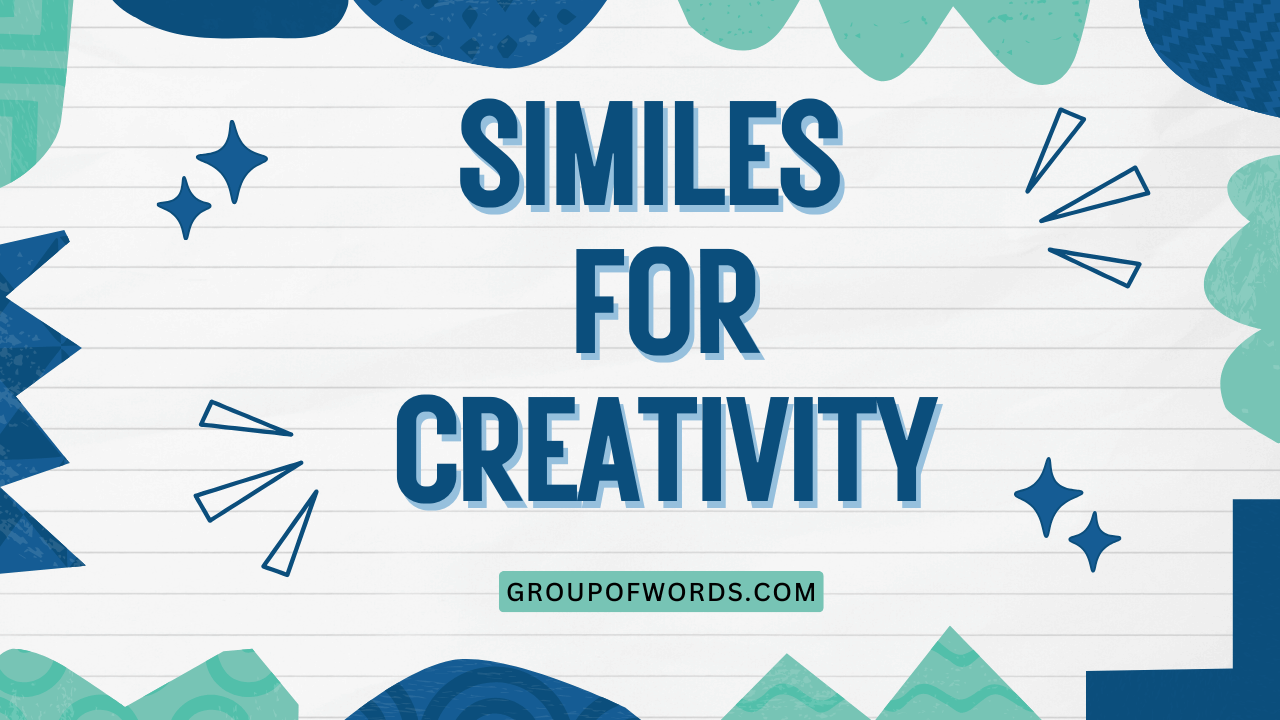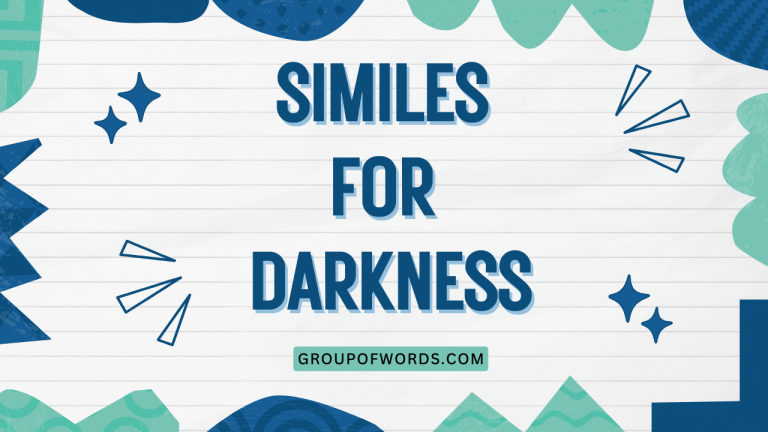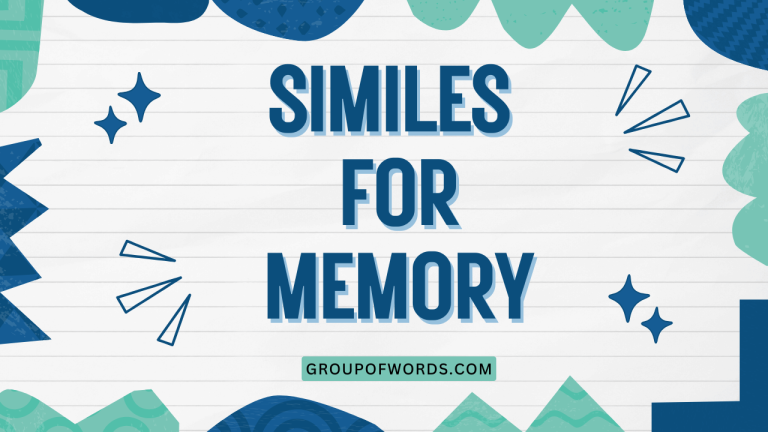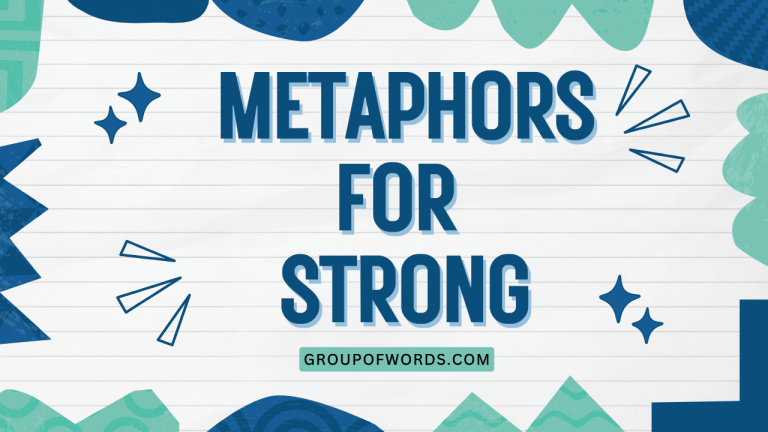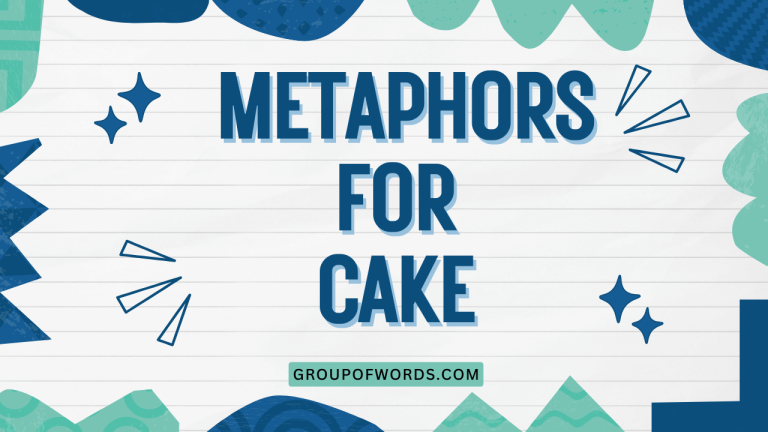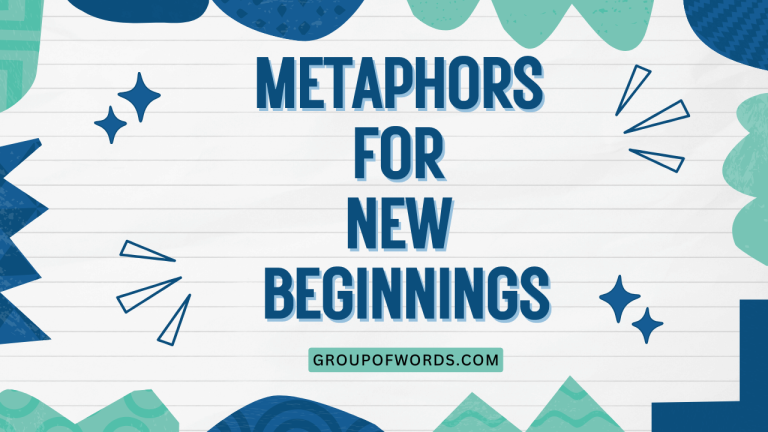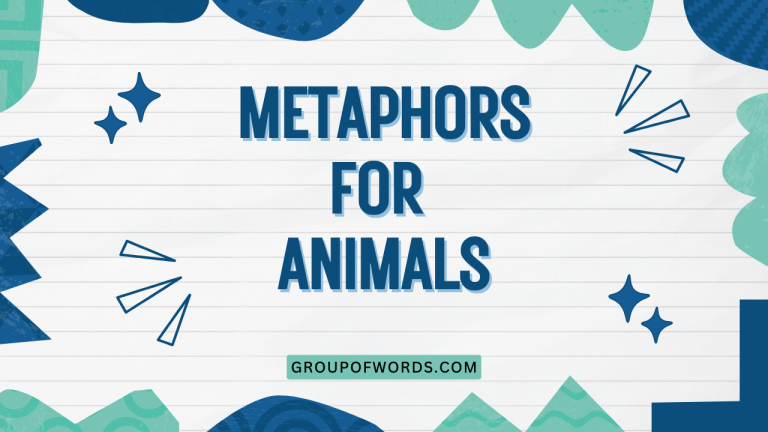Similes for Creativity: Unleash Your Imaginative Power
Understanding and using similes effectively is crucial for enhancing creativity in writing and communication. Similes allow you to draw imaginative connections between seemingly unrelated things, making your descriptions more vivid and engaging.
This article explores the definition, structure, types, and usage rules of similes, providing numerous examples and practice exercises to help you master this powerful literary device. Whether you’re a student, writer, or language enthusiast, this guide will equip you with the knowledge and skills to use similes creatively and confidently.
By mastering similes, you can transform ordinary descriptions into extraordinary expressions of creativity. This guide provides a comprehensive overview of similes, enabling you to craft compelling narratives, deliver impactful presentations, and express your ideas with flair.
Dive in to discover the boundless possibilities that similes offer for enriching your language and sparking your imagination.
Table of Contents
- Definition of a Simile
- Structural Breakdown of Similes
- Types of Similes
- Examples of Similes
- Usage Rules for Similes
- Common Mistakes with Similes
- Practice Exercises
- Advanced Topics in Similes
- Frequently Asked Questions (FAQ)
- Conclusion
Definition of a Simile
A simile is a figure of speech that compares two unlike things using the words “like” or “as.” The primary function of a simile is to create a vivid image or to emphasize a particular quality by drawing a comparison to something familiar. Similes add depth and color to writing, making it more engaging and memorable.
Similes can be found in various contexts, from literature and poetry to everyday conversations. They serve as a tool to clarify complex ideas by relating them to simpler concepts.
The effectiveness of a simile lies in the strength and relevance of the comparison made. A well-crafted simile can transform a mundane description into a captivating portrayal.
Classification of Similes
Similes can be classified based on their structure, function, and the type of comparison they make. Structural classification includes explicit similes (using “like” or “as”) and implied similes (where the comparison is suggested but not explicitly stated).
Functional classification categorizes similes based on their purpose, such as descriptive similes, explanatory similes, and emphatic similes.
The type of comparison can also classify similes, such as comparing physical attributes, emotional states, or abstract concepts. Understanding these classifications helps in identifying and creating effective similes.
Function of Similes
The main function of a simile is to enhance understanding and create a more vivid image in the reader’s or listener’s mind. By comparing something unfamiliar to something familiar, similes make abstract concepts more concrete and relatable.
They also add emotional depth and can evoke specific feelings or associations.
Similes are a powerful tool for persuasion and argumentation, as they can frame ideas in a way that resonates with the audience. In literature, similes contribute to the overall tone and mood of a piece, enriching the reader’s experience.
Contexts of Simile Usage
Similes are used in a wide range of contexts, including literature, poetry, speeches, advertising, and everyday conversation. In literature, they are used to create rich imagery and convey complex emotions.
In advertising, similes are used to make products more appealing and memorable. In everyday conversation, they add color and expressiveness to communication.
The effectiveness of a simile depends on its appropriateness to the context. A simile that works well in a poem might not be suitable for a formal business presentation.
Understanding the context and audience is crucial for using similes effectively.
Structural Breakdown of Similes
The basic structure of a simile involves two main components: the subject being described and the object to which it is compared, connected by the words “like” or “as.” Understanding this structure is essential for creating clear and effective similes.
The subject and object must be distinct entities, and the comparison should highlight a specific similarity between them. The choice of “like” or “as” often depends on the flow and rhythm of the sentence.
Subject and Object of Comparison
The subject of a simile is the entity being described, while the object is the entity to which it is being compared. The object is usually something more familiar or easily understood, which helps to illuminate the qualities of the subject.
The relationship between the subject and object is the key to a successful simile.
For example, in the simile “He is as strong as an ox,” “he” is the subject, and “an ox” is the object. The comparison highlights the subject’s strength by relating it to the well-known strength of an ox.
The Role of “Like” and “As”
The words “like” and “as” are the connective tissues of a simile, explicitly indicating that a comparison is being made. While they are often interchangeable, there are subtle differences in their usage.
“Like” is typically used to compare nouns or pronouns, while “as” can be used to compare clauses or phrases.
In the simile “She sings like an angel,” “like” connects the verb “sings” to the noun “angel.” In the simile “He is as tall as a tree,” “as” connects the adjective “tall” to the noun phrase “a tree.”
Patterns and Variations
Similes can follow various patterns, depending on the desired emphasis and effect. Some common patterns include: “A is like B,” “A is as [adjective] as B,” and “A does [verb] like B.” Variations can also include the use of more complex phrases and clauses to create more nuanced comparisons.
For example, “Her smile is like sunshine on a cloudy day” follows the pattern “A is like B,” while “The runner was as fast as lightning” follows the pattern “A is as [adjective] as B.” Experimenting with different patterns can help you create more creative and impactful similes.
Types of Similes
Similes can be categorized based on various criteria, such as their function, the type of comparison they make, and their level of originality. Understanding these different types can help you choose the most effective simile for a particular context.
Some common types of similes include descriptive similes, explanatory similes, emphatic similes, and clichéd similes. Each type serves a different purpose and has its own strengths and weaknesses.
Descriptive Similes
Descriptive similes are used to create a vivid image or to describe a physical attribute. They often appeal to the senses, helping the reader or listener visualize the subject more clearly.
These similes are particularly effective in literature and poetry.
For example, “The sky was as blue as the ocean” is a descriptive simile that helps the reader visualize the color of the sky. “Her hair was like spun gold” is another example, evoking a sense of beauty and radiance.
Explanatory Similes
Explanatory similes are used to clarify a complex idea or concept by comparing it to something more familiar. They are often used in educational and technical contexts to make abstract ideas more accessible.
For example, “The human heart is like a pump, constantly circulating blood throughout the body” is an explanatory simile that simplifies the function of the heart. “The internet is like a vast library, containing information on almost every topic imaginable” is another example, helping to illustrate the scope and accessibility of the internet.
Emphatic Similes
Emphatic similes are used to emphasize a particular quality or characteristic. They often involve hyperbole or exaggeration to make the comparison more striking.
These similes are particularly effective in persuasive writing and speeches.
For example, “He was as stubborn as a mule” is an emphatic simile that highlights the subject’s obstinacy. “She was as brave as a lion” is another example, emphasizing her courage and fearlessness.
Clichéd Similes
Clichéd similes are overused and unoriginal comparisons that have lost their impact. While they may be easy to come up with, they often fail to engage the reader or listener.
It’s best to avoid clichéd similes and strive for more creative and original comparisons.
Examples of clichéd similes include “as blind as a bat,” “as quiet as a mouse,” and “as busy as a bee.” While these similes are easily understood, they lack originality and can make your writing seem uninspired. Strive to create fresh and imaginative similes that will capture your audience’s attention.
Examples of Similes
Here are several examples of similes, organized by category, to illustrate their usage and variety. These examples will help you understand how to craft your own similes effectively.
Descriptive Similes
The following table provides examples of descriptive similes, which focus on creating vivid imagery and appealing to the senses.
| Simile | Explanation |
|---|---|
| The lake was as smooth as glass. | Describes the calmness and stillness of the lake. |
| Her skin was like velvet. | Emphasizes the softness and smoothness of her skin. |
| The stars were like diamonds in the sky. | Highlights the brilliance and sparkle of the stars. |
| The fog was as thick as pea soup. | Describes the density and opaqueness of the fog. |
| His voice was as smooth as silk. | Emphasizes the pleasant and soothing quality of his voice. |
| The sunset looked like a painting. | Highlights the beauty and artistry of the sunset. |
| The snow fell like feathers from the sky. | Describes the gentle and delicate descent of the snow. |
| The coffee was as bitter as medicine. | Emphasizes the strong and unpleasant taste of the coffee. |
| The music was like a gentle breeze. | Describes the soothing and calming effect of the music. |
| The flowers smelled as sweet as honey. | Highlights the delightful and fragrant scent of the flowers. |
| The moon glowed like a pearl in the night. | Describes the soft and luminous quality of the moon. |
| His eyes were as blue as the summer sky. | Emphasizes the clear and vibrant color of his eyes. |
| The sand felt like warm sugar beneath my feet. | Highlights the fine and comforting texture of the sand. |
| The city at night was like a sea of lights. | Describes the vast and glittering expanse of the city. |
| Her laughter was like the chiming of bells. | Emphasizes the cheerful and melodious sound of her laughter. |
| The autumn leaves were like a patchwork quilt. | Describes the colorful and varied pattern of the leaves. |
| The river flowed as smoothly as oil. | Highlights the effortless and fluid movement of the river. |
| The bread was as crusty as old leather. | Emphasizes the rough and textured surface of the bread. |
| The rain fell like a curtain of tears. | Describes the heavy and relentless downpour of rain. |
| The clouds were like fluffy cotton balls. | Emphasizes the soft and light appearance of the clouds. |
Explanatory Similes
The following table provides examples of explanatory similes, which aim to clarify complex ideas by comparing them to familiar concepts or objects.
| Simile | Explanation |
|---|---|
| The brain is like a computer, processing information constantly. | Simplifies the complex function of the brain. |
| A cell is like a factory, with many parts working together. | Explains the intricate workings of a cell. |
| Learning a new language is like climbing a mountain. | Illustrates the challenges and rewards of language acquisition. |
| The stock market is like a roller coaster, with ups and downs. | Describes the volatile nature of the stock market. |
| The digestive system is like a food processor, breaking down nutrients. | Simplifies the process of digestion. |
| A family is like a team, working together towards common goals. | Illustrates the collaborative nature of family relationships. |
| The scientific method is like a recipe, with specific steps to follow. | Explains the structured approach of scientific inquiry. |
| Democracy is like a garden, requiring constant care and attention. | Highlights the need for active participation in a democracy. |
| The internet is like a global village, connecting people from all over the world. | Describes the interconnectedness of the internet. |
| The immune system is like an army, defending the body against invaders. | Simplifies the protective function of the immune system. |
| Writing a novel is like building a house, one brick at a time. | Illustrates the step-by-step process of writing a novel. |
| The economy is like a complex ecosystem, with interdependent parts. | Explains the interconnectedness of economic factors. |
| A business is like a ship, requiring a captain to steer it. | Highlights the importance of leadership in a business. |
| Love is like a plant, needing nourishment to grow. | Illustrates the need for care and attention in a relationship. |
| Time is like a river, constantly flowing and never stopping. | Describes the continuous and irreversible nature of time. |
| Friendship is like a shelter, providing comfort and support. | Illustrates the supportive nature of friendship. |
| Communication is like a bridge, connecting people together. | Highlights the importance of effective communication. |
| The solar system is like an atom, with planets orbiting the sun. | Simplifies the structure of the solar system. |
| A contract is like a promise, legally binding and enforceable. | Explains the legal significance of a contract. |
| Art is like a mirror, reflecting society’s values and beliefs. | Illustrates the reflective nature of art. |
Emphatic Similes
The following table provides examples of emphatic similes, which are used to emphasize a particular quality or characteristic, often through hyperbole.
| Simile | Explanation |
|---|---|
| He was as hungry as a wolf. | Emphasizes his extreme hunger. |
| She was as angry as a hornet. | Highlights her intense anger. |
| He ran as fast as the wind. | Emphasizes his incredible speed. |
| She was as quiet as a graveyard. | Highlights her complete silence. |
| He slept like a log. | Emphasizes his deep and undisturbed sleep. |
| She was as stubborn as a mule. | Highlights her extreme obstinacy. |
| He was as brave as a lion. | Emphasizes his exceptional courage. |
| She was as graceful as a swan. | Highlights her elegant and refined movements. |
| He was as strong as an ox. | Emphasizes his immense strength. |
| She was as radiant as the sun. | Highlights her brilliant and glowing appearance. |
| He was as nervous as a cat in a room full of rocking chairs. | Emphasizes his extreme nervousness. |
| She was as quick as a whip. | Highlights her swift and agile movements. |
| He was as sharp as a tack. | Emphasizes his intelligence and wit. |
| She was as cold as ice. | Highlights her lack of emotion or warmth. |
| He was as busy as a one-armed paper hanger. | Emphasizes his extreme busyness. |
| She was as happy as a clam at high tide. | Highlights her extreme happiness. |
| He was as light as a feather. | Emphasizes his weightlessness and agility. |
| She was as smooth as butter. | Highlights her effortless and graceful movements. |
| He was as tough as nails. | Emphasizes his resilience and durability. |
| She was as sweet as pie. | Highlights her endearing and pleasant nature. |
Usage Rules for Similes
Using similes effectively requires adherence to certain rules and guidelines. These rules ensure that your similes are clear, impactful, and appropriate for the context.
Key rules include ensuring a clear comparison, avoiding clichés, and considering the audience and purpose of your writing. Understanding these rules will help you create more effective and engaging similes.
Ensuring a Clear Comparison
The most important rule for using similes is to ensure that the comparison is clear and understandable. The reader or listener should be able to easily identify the connection between the subject and the object of comparison.
If the comparison is too obscure or far-fetched, it will fail to achieve its intended effect.
For example, comparing “a car” to “a cheetah” to emphasize speed is clear and effective because cheetahs are known for their speed. However, comparing “a car” to “a cloud” to emphasize speed would be confusing and ineffective.
Avoiding Clichés
As mentioned earlier, clichéd similes are overused and unoriginal comparisons that have lost their impact. Avoid using these similes and strive for more creative and imaginative comparisons.
Using fresh and original similes will make your writing more engaging and memorable.
Instead of saying “as blind as a bat,” try “as unable to see in the dark as someone without night vision.” This more specific and original comparison will have a greater impact on your audience.
Considering Audience and Purpose
The effectiveness of a simile depends on its appropriateness to the audience and purpose of your writing. Consider the knowledge and background of your audience when choosing a comparison.
A simile that works well for one audience may not be effective for another.
Also, consider the purpose of your writing. Are you trying to describe something vividly, explain a complex concept, or emphasize a particular quality?
Choose similes that align with your overall goal.
Exceptions and Special Cases
While the general rules for using similes are fairly straightforward, there are some exceptions and special cases to be aware of. For example, in certain contexts, a clichéd simile may be used intentionally for comedic effect or to create a sense of familiarity.
Also, in some cases, a simile may be implied rather than explicitly stated. This is known as an implied simile or a metaphor.
Understanding these exceptions and special cases will help you use similes more effectively and creatively.
Common Mistakes with Similes
Even experienced writers can make mistakes when using similes. Being aware of these common errors can help you avoid them and improve the quality of your writing.
Common mistakes include using incorrect comparison words, creating illogical comparisons, and mixing similes and metaphors. Avoiding these mistakes will enhance the clarity and impact of your similes.
Incorrect Comparison Words
One common mistake is using the wrong comparison word. Remember that similes use “like” or “as” to make a comparison.
Using other words, such as “than,” can create a different type of comparison or even an error.
Incorrect: He is faster than a cheetah.
Correct: He is as fast as a cheetah.
Correct: He is like a cheetah when he runs.
Illogical Comparisons
Another common mistake is creating comparisons that don’t make logical sense. The subject and object of comparison should share a relevant similarity.
If the connection is too weak or non-existent, the simile will be ineffective.
Incorrect: The book was as heavy as a cloud.
Correct: The book was as heavy as a brick.
Mixing Similes and Metaphors
Similes and metaphors are related figures of speech, but they are not interchangeable. A simile makes an explicit comparison using “like” or “as,” while a metaphor implies a comparison without using these words.
Mixing the two can create confusion.
Incorrect: He is like a lion, a beast of courage.
Correct (Simile): He is as brave as a lion.
Correct (Metaphor): He is a lion in battle.
Practice Exercises
Test your understanding of similes with these practice exercises. Each exercise includes a set of questions and their corresponding answers to help you assess your knowledge.
Exercise 1: Identifying Similes
Identify the similes in the following sentences. Underline the simile and identify the subject and object of comparison.
| Question | Answer |
|---|---|
| 1. Her voice was like a melody. | Simile: like a melody. Subject: Her voice. Object: A melody. |
| 2. The snow fell as gently as feathers. | Simile: as gently as feathers. Subject: The snow. Object: Feathers. |
| 3. He is a rock. | Not a simile (it’s a metaphor). |
| 4. The car was as fast as lightning. | Simile: as fast as lightning. Subject: The car. Object: Lightning. |
| 5. She dances like a dream. | Simile: like a dream. Subject: She. Object: A dream. |
| 6. His anger was a storm. | Not a simile (it’s a metaphor). |
| 7. The night was as black as coal. | Simile: as black as coal. Subject: The night. Object: Coal. |
| 8. The baby slept like a log. | Simile: like a log. Subject: The baby. Object: A log. |
| 9. Her eyes shone like stars. | Simile: like stars. Subject: Her eyes. Object: Stars. |
| 10. The old house stood like a sentinel. | Simile: like a sentinel. Subject: The old house. Object: A sentinel. |
Exercise 2: Completing Similes
Complete the following similes with an appropriate comparison. Be creative!
| Question | Answer |
|---|---|
| 1. The sun was as hot as _____. | Possible answer: The sun was as hot as a furnace. |
| 2. The water was as cold as _____. | Possible answer: The water was as cold as ice. |
| 3. He was as quiet as _____. | Possible answer: He was as quiet as a shadow. |
| 4. She was as graceful as _____. | Possible answer: She was as graceful as a ballerina. |
| 5. The food tasted like _____. | Possible answer: The food tasted like heaven. |
| 6. The wind howled like _____. | Possible answer: The wind howled like a wolf. |
| 7. The moon shone like _____. | Possible answer: The moon shone like a silver coin. |
| 8. Her smile was as bright as _____. | Possible answer: Her smile was as bright as the sun. |
| 9. He was as stubborn as _____. | Possible answer: He was as stubborn as a mule. |
| 10. The city was as busy as _____. | Possible answer: The city was as busy as a beehive. |
Exercise 3: Creating Similes
Create your own similes to describe the following subjects.
| Subject | Possible Simile |
|---|---|
| 1. A rainy day | Possible answer: A rainy day is like a sad song. |
| 2. A crowded room | Possible answer: A crowded room is like a can of sardines. |
| 3. A difficult task | Possible answer: A difficult task is like climbing a steep mountain. |
| 4. A peaceful garden | Possible answer: A peaceful garden is like a sanctuary. |
| 5. A loud concert | Possible answer: A loud concert is like a thunderclap. |
| 6. A dark forest | Possible answer: A dark forest is like a mysterious maze. |
| 7. A fast car | Possible answer: A fast car is like a bullet. |
| 8. A warm blanket | Possible answer: A warm blanket is like a comforting hug. |
| 9. A sweet dream | Possible answer: A sweet dream is like a fleeting paradise. |
| 10. A long journey | Possible answer: A long journey is like a winding road. |
Advanced Topics in Similes
For advanced learners, there are several more complex aspects of similes to explore. These topics delve into the nuances of simile usage and their role in literature and rhetoric.
Advanced topics include extended similes, metaphorical similes, and the use of similes in persuasive writing. Understanding these advanced concepts will further enhance your ability to use similes effectively and creatively.
Extended Similes
An extended simile is a simile that is developed over several lines or even paragraphs. It involves a more detailed and elaborate comparison between the subject and object, exploring multiple points of similarity.
Extended similes are often used in poetry and prose to create a richer and more immersive experience for the reader.
For example, instead of simply saying “Life is like a journey,” an extended simile might elaborate on this comparison by describing the various stages of the journey, the challenges and obstacles encountered along the way, and the ultimate destination.
Metaphorical Similes
A metaphorical simile is a simile that uses a metaphor as the object of comparison. This creates a double layer of figurative language, adding depth and complexity to the comparison.
Metaphorical similes are often used to express abstract or intangible concepts in a more concrete and relatable way.
For example, instead of saying “Her anger was like fire,” a metaphorical simile might say “Her anger was like a volcano, ready to erupt at any moment.” The volcano is a metaphor for her anger, and the simile connects the two in a vivid and powerful way.
Similes in Persuasive Writing
Similes can be a powerful tool in persuasive writing, as they can frame ideas in a way that resonates with the audience and makes them more receptive to the argument. By comparing a complex or unfamiliar concept to something familiar and relatable, similes can make the argument more accessible and persuasive.
For example, in an argument for environmental conservation, you might say “Our planet is like a garden, and we must tend to it carefully if we want it to flourish.” This simile connects the abstract concept of environmental conservation to the familiar image of a garden, making the argument more compelling and persuasive.
Frequently Asked Questions (FAQ)
Here are some frequently asked questions about similes, along with detailed answers to clarify any confusion.
- What is the difference between a simile and a metaphor?
A simile is a comparison using “like” or “as,” while a metaphor is an implied comparison without using those words. For example, “He is as brave as a lion” is a simile, while “He is a lion in battle” is a metaphor.
- Can a simile be a cliché?
Yes, a simile can be a cliché if it is overused and unoriginal. It’s best to avoid clichéd similes and strive for more creative and imaginative comparisons.
- How can I make my similes more creative?
To make your similes more creative, try to think outside the box and find unexpected connections between the subject and object of comparison. Use vivid language and imagery to create a strong impression on the reader.
- When is it appropriate to use similes in writing?
Similes are appropriate in a wide range of contexts, including literature, poetry, speeches, and advertising. They are particularly effective when you want to create a vivid image, explain a complex concept, or emphasize a particular quality.
- How do I avoid using clichéd similes?
To avoid using clichéd similes, try to think of fresh and original comparisons that haven’t been used before. Brainstorm different ideas and consider the specific qualities you want to highlight.
- Are similes only used in writing?
No, similes are also used in spoken language to add color and expressiveness to communication. They are a common feature of everyday conversation.
- What is an extended simile?
An extended simile is a simile that is developed over several lines or paragraphs, exploring multiple points of similarity between the subject and object of comparison.
- Can a sentence contain both a simile and a metaphor?
While not common, it is possible for a sentence to subtly incorporate both a simile and a metaphor, although it’s crucial to ensure clarity and avoid confusion. This often involves a primary simile with a secondary metaphorical element within the comparison. However, for most writing, it’s best to focus on using one figure of speech at a time for maximum impact.
Conclusion
Similes are a powerful literary device that can enhance creativity and add depth to your writing and communication. By understanding the definition, structure, types, and usage rules of similes, you can effectively use them to create vivid images, explain complex concepts, and emphasize particular qualities.
Avoiding common mistakes and practicing your skills will further improve your ability to use similes creatively and confidently.
Mastering similes is an ongoing process that requires practice and experimentation. By incorporating similes into your writing and speech, you can transform ordinary expressions into extraordinary displays of imagination and artistry.
Embrace the power of similes to unlock your creative potential and captivate your audience with your words.
